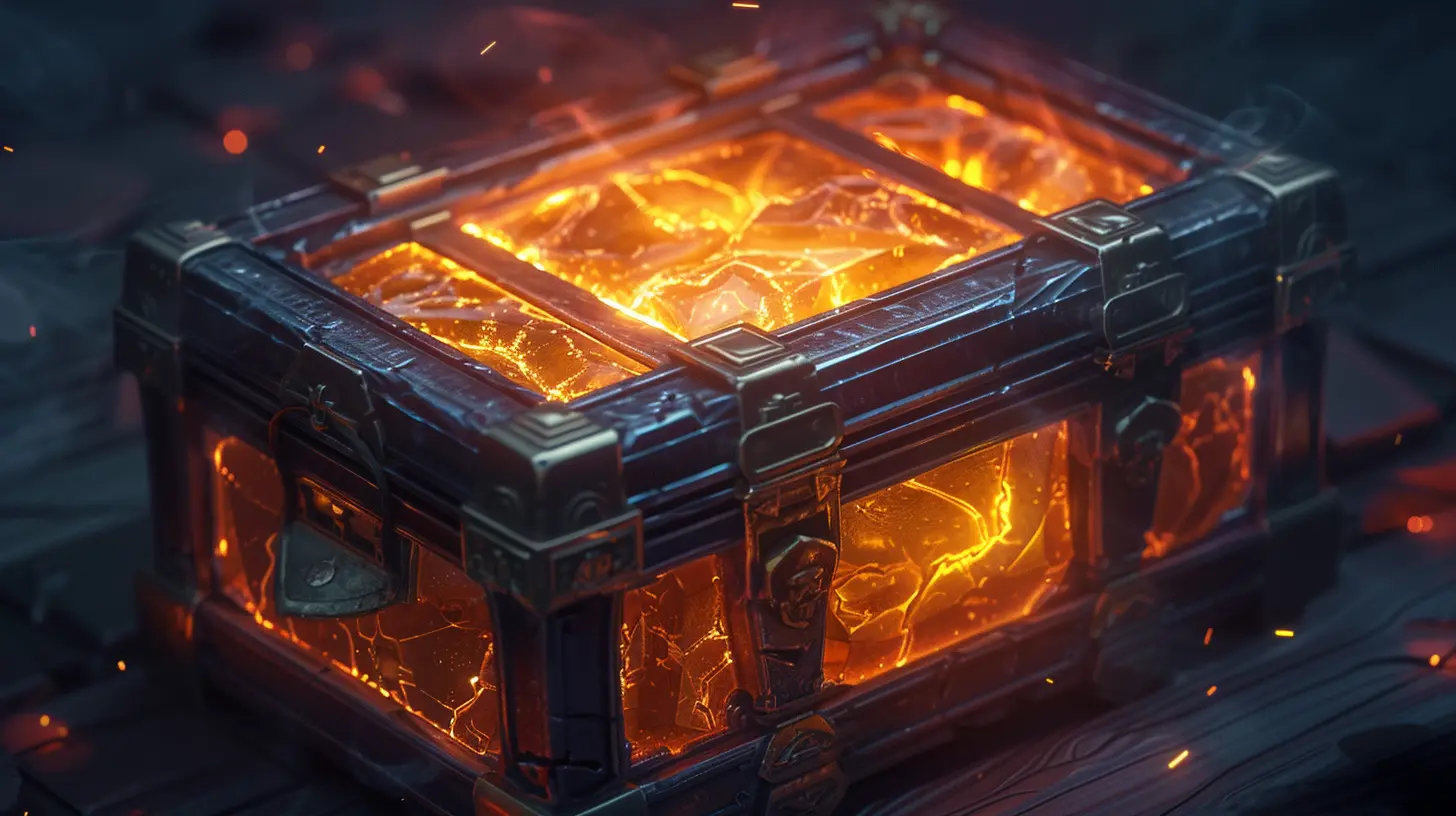The Role of Loot Boxes in Player Retention
31 October 2025
Picture this: You've just completed a tough mission, your heart's still pounding from the action, and you're feeling on top of the world. Then—bam! A glowing loot box appears on your screen. Your pulse quickens again. What's inside? Could it be that rare skin or gear you've been dreaming of? You click. The lights flash. The box opens.
And just like that, you’re hooked.
Welcome to the whirlwind world of loot boxes—those mysterious digital treasure chests that have become a cornerstone of modern gaming. But they’re more than just flashy wrappers for in-game goodies. These virtual capsules of chance play a massive role in keeping players engaged, returning, and sometimes obsessively attached.
In this lyrical dive, we’ll unpack the sticky, glittering truth behind loot boxes and how they weave their magic into the fabric of player retention.
What Are Loot Boxes, Really?
Loot boxes are in-game items that contain randomized rewards. Think of them as the gaming version of a gumball machine: you insert a coin (or time, or real money), and you get a surprise. Sometimes it’s something rare and powerful; other times, it’s just digital fluff.But just like surprise toys or mystery gift bags, the thrill lies in not knowing what you’ll get. That anticipation is everything.
Loot Boxes and the Psychology of Surprise 🎁
Humans love surprises. It's hardwired into our brains. When we encounter unpredictability tied to reward—even something small—the brain releases dopamine, the feel-good chemical. This is the same mechanism that fuels gambling and social media addiction.In gaming, this is where loot boxes shine (literally).
Opening one feels exciting because it taps into our instinctive love for uncertainty and reward. It’s a high-risk, high-reward mechanic, and even when you walk away empty-handed (or with a boring common item), you feel like maybe—just maybe—the next box will hold gold.
This psychological trickery is no accident. Game developers have finely tuned the experience to release just enough dopamine to keep you coming back for more.
Why Are Loot Boxes So Addictive?
Let’s keep it real. Loot boxes don’t just feel good; they’re designed to be addictive. But what makes them so sticky?1. The “Just One More” Mentality
You open one loot box and get a taste of thrill. Maybe you didn’t get what you wanted, so what do you do? Open another. And another. It's like chasing a high. Every box feels like a roll of the dice, and players often fall into the trap of “just one more.”2. FOMO — Fear of Missing Out
When games feature time-limited loot or exclusive seasonal items, it creates urgency. Miss out on this box now, and you might never get that dragon-themed armor set again. That ticking clock builds pressure—and pressure leads to engagement.3. Social Bragging Rights
Let’s face it. We all love flexing a little. Online games are no different. Pulling a rare skin or item from a loot box offers major street cred. If your character is rocking rare gear that your friends can't get, you're instantly elevated in the game’s social hierarchy.
How Loot Boxes Fuel Player Retention ⏳
Now let’s get to the meat of it—why developers love loot boxes and how they use them to glue players to their games. It’s not just about monetization. It’s about longevity.1. Creating Long-Term Goals
You might not get your desired item on the first try—or the second, or third. But if the dream item lives within those boxes, you'll have a reason to keep grinding, logging in, and playing. That goalpost moves slightly with every box, tempting you to stay in the game.2. Encouraging Daily Logins
Many games reward players with a daily loot box or materials to earn one. The catch? You've got to log in every day. This daily loop builds habits. Before you know it, checking in “just for the box” becomes part of your routine.3. Stimulating the “Event Economy”
Seasonal events or special promotions usually revolve around exclusive items only available from loot boxes. These events spike player engagement and retention, making old players return and new players stay longer.4. Soft Progression Systems
Even if you don’t get the jackpot item, many games incorporate “pity timers” or progression meters—where every box opened inches you closer to that dream reward. It's the digital equivalent of a loyalty punch card at your favorite coffee shop.Loot Boxes vs. Traditional Reward Systems
Let’s compare loot boxes to old-school, unlock-based systems.In retro games, you grind a level, beat a boss, and earn a set reward. Simple, direct, and predictable. But over time, predictability can turn to boredom.
Loot boxes, on the other hand, keep things spicy. They add an element of surprise and excitement that traditional systems often lack. That unpredictability can make gameplay feel fresher and more dynamic—even if the core loop remains the same.
It’s like trading in your fixed menu meal for a mystery box dinner. You never know what you’ll get, and that’s half the fun.
Are Loot Boxes Manipulative?
Here’s where things get messy.Critics argue that loot boxes exploit players—especially younger ones—by mimicking gambling behaviors. And in many ways, they’re not wrong. The similarity between loot boxes and slot machines is striking. The flashing lights, the sounds, the anticipation—it’s all engineered to keep you engaged and spending.
Regulatory bodies around the world have started to take notice, with some countries even classifying loot boxes as a form of gambling.
So where do we draw the line between engaging mechanics and manipulative design?
Game devs walk a tightrope here. Some do it ethically, offering loot boxes that are cosmetic-only or obtainable through gameplay. Others? Well, not so much.
When Loot Boxes Go Right ✅
Not all loot box systems are created equal. The ones that work well share a few key traits:- Transparency: They show the odds of what you’re getting.
- Progression without paywalling: Players can earn loot boxes through gameplay, not just purchases.
- Cosmetic-only rewards: The items don’t affect gameplay, so paying players don’t get an unfair advantage.
- Fun without the pressure: Players feel rewarded, not obligated.
Games like Overwatch and Apex Legends have found ways to make loot boxes feel rewarding without turning them into straight-up cash grabs.
When Loot Boxes Go Wrong ❌
Oh, but when they fail–they fail hard.Games that lock progress behind loot boxes, or tie them too closely to real-world spending, risk alienating their players. Pay-to-win models built around loot crate mechanics can destroy competitive balance and foster resentment in the community.
Take Star Wars Battlefront II. Its original loot box system was so controversial it sparked international debate, leading EA to scrap the model entirely after massive backlash.
Lesson learned (we hope): if your loot box system feels like it’s preying on your player base, you’re not using it right.
Can Loot Boxes Exist Without Monetization?
Absolutely.Many games use loot boxes purely for fun, offering them as rewards for in-game accomplishments. In these cases, they act more as mystery presents than monetization tools.
This approach favors the player by keeping the thrill intact while removing the financial stakes. It's a smart way to boost retention without dipping into predatory territory.
Tips for Game Devs: How to Use Loot Boxes the Right Way
If you’re a developer, here’s a cheat sheet to keep your loot boxes fun and ethical:- Be transparent about odds
- Make them earnable through gameplay
- Avoid pay-to-win mechanics
- Provide alternative paths to earn rare items
- Use them to enhance, not gatekeep, gameplay
Player trust is hard to win back once lost. Keep your systems fair, and your players will stick around longer—not because they’re trapped, but because they’re having fun.
Final Thoughts: The Double-Edged Sword
Loot boxes are a bit like fire. When used responsibly, they can light up your game with excitement, engagement, and endless possibility. But mishandle them, and you risk burning down the house.Their role in player retention is clear—they’re powerful tools that can stretch a player’s engagement for weeks, months, or even years. But with great power comes great responsibility.
So next time you crack open a loot box, take a moment. Feel the rush, enjoy the ride—but always know where the line is between entertainment and exploitation.
Because, after all—no loot should ever cost more than your love for the game.
all images in this post were generated using AI tools
Category:
Loot BoxesAuthor:

Lucy Ross
Discussion
rate this article
1 comments
Silas McVeigh
Ah yes, loot boxes—the magical mystery boxes that keep players glued to their screens! Who needs genuine gameplay or compelling narratives when you can just toss some virtual goodies into a randomizer? Clearly, nothing says “I care about my players” like a chance at a shiny pixel!
November 9, 2025 at 5:38 AM

Lucy Ross
While loot boxes can encourage engagement, balancing them with meaningful gameplay and narratives is crucial for truly rewarding player experiences.


